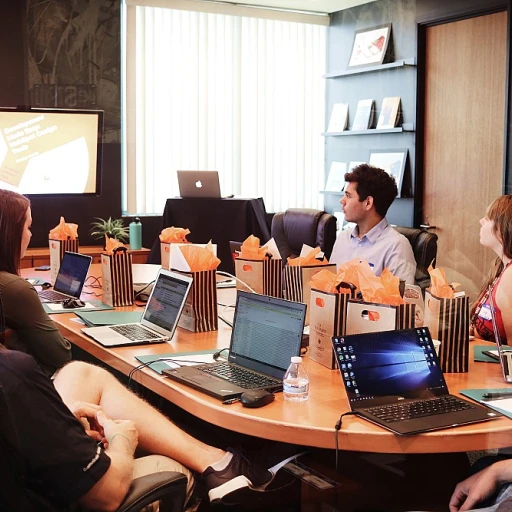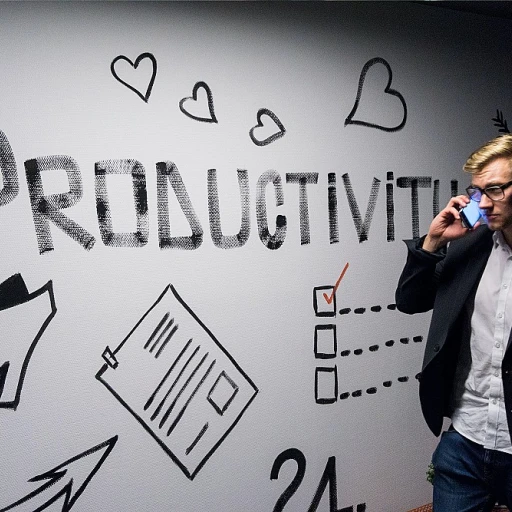
Understanding the Role of an Annual Learning Plan in Onboarding
Grasping the Significance of Structured Learning for Career Development
The implementation of a structured annual learning plan (ALP) plays a critical role in the onboarding process. As organizations strive to enhance professional learning, the adoption of a comprehensive learning plan becomes a cornerstone of career development. An ALP aims to effectively address key skills development required for new hires to succeed in their roles.
By strategically crafting these plans, organizations set the stage for employees to embark on a learning journey that promotes skill enhancement, critical thinking, and problem solving. The ALP lays out a roadmap designed to meet both individual and organizational goals, ensuring that new hires have the resources they need to flourish.
An annual learning plan serves multiple crucial functions in the onboarding process.
- Roadmap for Progress: It provides a structured plan for skill acquisition and professional growth. This proactive approach ensures employees are equipped for long-term success.
- Identifying Areas for Improvement: The ALP helps track progress and identify areas where further development is needed, ensuring that employees remain competitive within the evolving job market.
- Adaptive Learning: Tailoring learning experiences to match individual needs fosters a more personalized approach, aligning personal growth with organizational objectives.
Such an approach is particularly crucial as organizations aim to future-proof their workforce amidst a rapidly changing professional landscape. They need to remain adaptable, using digital tools and resources to address development areas efficiently.
In conclusion, the annual learning plan establishes a robust framework that supports new employees not only in their immediate role but also in their broader career trajectory. It is essential that organizations integrate this into their onboarding to build a resilient workforce capable of thriving amidst change.
Key Components of a Successful Learning Plan
Identifying Core Learning Areas
Crafting an effective annual learning plan (ALP) begins with the identification of core areas for improvement. Understanding the key skills required for professional growth within an organization is crucial. This involves evaluating both immediate role requirements and potential skills needed for future career development.Aligning Goals with Business Objectives
An ALP should not only focus on personal career development but also align with the broader business objectives. Highlight areas where professional learning can contribute to organizational success, ensuring a mutually beneficial relationship between employee growth and company progress. This alignment reinforces a shared commitment towards achieving both individual and organizational goals.Utilizing Effective Learning Tools
Incorporating the right tools is essential for nurturing a productive learning experience. Professional development is greatly enhanced by integrating digital tools that aid in skill acquisition, such as professional learning platforms and interactive modules. These resources offer a proactive approach towards skill development and improvement.Establishing a Realistic and Detailed Plan
A successful ALP meticulously outlines a clear and achievable development plan. It should effectively balance short-term learning needs with the objective of long-term professional growth. Integrating problem-solving and critical thinking exercises into the learning journey can significantly improve decision-making capabilities, ensuring one remains competitive in the job market.Tracking Progress and Ensuring Accountability
An essential feature of a successful ALP is the ability to track progress. Keeping track of milestones can effectively demonstrate continuous improvement and provide insights into further development needs. Periodic reviews ensure the learner remains on track, adapting the plan as necessary to address any changes in career objectives or industry trends. Incorporating setting professional goals is vital to ensure the success of an ALP, helping align learning objectives with overarching career aspirations.Tailoring Learning Plans to Individual Needs
Adapting Learning Strategies for Personalized Paths
The importance of addressing individual learning needs within the scope of an annual learning plan cannot be overstated. Each employee’s skills, experiences, and professional goals vary greatly, necessitating a proactive approach to tailor learning experiences that support personal and career development.
An effective learning plan must recognize areas where improvement is needed while also acknowledging personal strengths. This personalized touch facilitates not just professional growth but also ensures employees remain engaged and motivated. Tailoring can be achieved through the following steps:
- Assessment and Feedback: Start by assessing individual skills and gathering feedback to understand each employee's aspirations and areas for improvement. This initial stage is critical in formulating personalized development plans.
- Setting Specific, Measurable Goals: Clearly define what employees aim to achieve in the short term and long term. Specific goals enhance understanding and direct efforts towards skill enhancement and professional learning.
- Utilizing Digital Tools: Incorporating digital solutions to track progress and adjust the learning plan according to emerging needs. Modern tools foster a flexible learning journey and help maintain alignment with career development objectives.
- Fostering Critical Thinking and Problem Solving: The job market demands skills such as decision making and problem solving. Learning paths can be designed to amplify these abilities through real-world projects and learning experiences.
By approaching learning plans with a personalized mindset, organizations can significantly improve their employees' professional growth while simultaneously addressing individual aspirations. This alignment not only fosters an effective onboarding experience but also prepares employees for future white-collar challenges and opportunities.
Integrating Technology into Learning Plans
Embracing the Digital Transformation in Annual Learning Plans
In today's fast-paced job market, integrating technology into learning plans is not just an option, it's a necessity. The utilization of digital tools effectively enhances the learning experience, ensuring both immediate and long-term professional growth. These tools serve as an extension of the traditional learning methods, providing a more dynamic and flexible approach to skill development and career advancement.
Firstly, technology facilitates the customization of learning plans to cater to individual needs, a task that is critical for effective onboarding. It supports a proactive approach by helping track progress and identify areas of improvement. This ensures that learners remain engaged and motivated, amplifying their understanding and enhancing critical thinking skills. With access to a wide array of resources, employees are better equipped to improve skills that align with their career development goals.
- Interactive E-Learning Platforms: These platforms offer a diverse range of content and interactive modules that cater to different learning styles. They foster an environment conducive to professional development, making learning an enjoyable and engaging journey.
- Adaptive Learning Technologies: These systems personalize the learning experience by adapting to the user's learning pace and style, thereby ensuring effective progress and skill acquisition.
- Collaboration Tools: With these tools, employees can effectively share insights, solve problems collaboratively, and engage in decision-making processes that are crucial for their professional growth.
- Assessment and Analytics: These tools provide valuable feedback on a learner's performance, helping instructors and learners to identify strengths and areas improvement.
The digital transformation is reshaping the learning landscape, and its integration into annual learning plans radically amplifies the potential for career development and professional growth. By leveraging these digital solutions, organizations can ensure that their onboarding process remains aligned with the evolving needs of the workforce and the future's demands.
Measuring the Impact of Learning Plans on Onboarding
Evaluating the Effectiveness of Learning Strategies
Measuring the impact of annual learning plans on onboarding is crucial to ensuring you're on the right track towards professional growth. By doing so, you can understand how effectively the skills and knowledge imparted are contributing to employee development and career progression. To enhance understanding of how well these plans are working, it's essential to establish clear goals at the onset of the learning journey. These goals should align with both individual and organizational objectives. Consider using digital tools to track progress, enabling a proactive approach towards meeting skill enhancement needs. Regular assessments and feedback loops are vital components of the evaluation process. By gathering data on areas of improvement, you can refine the learning experiences, ensuring they remain relevant in the ever-evolving job market. For example, tracking progress in critical thinking, problem solving, and decision making can provide a comprehensive view of professional development. Moreover, an effective annual learning plan should incorporate professional learning and development plans to ensure long-term career growth. It's about laying a foundation for future skills and creating a robust framework that supports both immediate and long-term career development. Finally, benchmarking against industry standards and best practices can offer valuable insights into potential areas of improvement. This, coupled with regular reviews of learning plans, provides a holistic evaluation and helps in fine-tuning the strategies employed. In conclusion, by meticulously measuring the impact of learning plans, organizations can ensure that their onboarding processes not only meet but exceed expectations, driving professional growth and career success.Overcoming Challenges in Implementing Learning Plans
Addressing Implementation Hurdles Effectively
Implementing a robust annual learning plan can face significant challenges. It's crucial to tackle these hurdles to ensure the overall effectiveness and success of the onboarding process. Let's dive into some of the common obstacles and ways to address them. Managing Diverse Learning Needs Onboarding new hires involves accommodating a wide array of skill levels, learning preferences, and professional backgrounds. Crafting an annual learning plan that caters to this diversity is essential for effective professional development. To manage this:- Develop a flexible plan that includes multiple learning paths tailored to individual needs.
- Utilize a mix of traditional and digital tools to enhance the learning experience.
- Foster an understanding culture where employees feel comfortable expressing their learning preferences.
- Incorporate periodic reviews and adjust the plan as needed.
- Encourage proactive approaches among employees to identify skills they want to develop.
- Create opportunities for critical thinking and decision-making exercises.
- Choose digital tools that align with the organization's learning and development goals.
- Continuously assess the impact of these tools on career development and professional growth.
- Provide training sessions on the chosen digital platforms to build competence and confidence.
- Set clear metrics and indicators that align with anticipated career development milestones.
- Utilize feedback mechanisms to gather insights on the learning journey and adjust strategies.
- Align success measures with long-term career and organizational goals.












